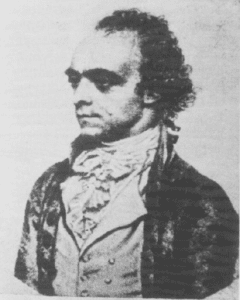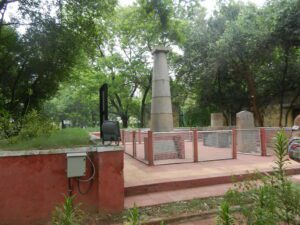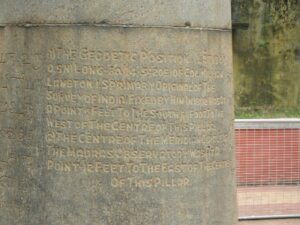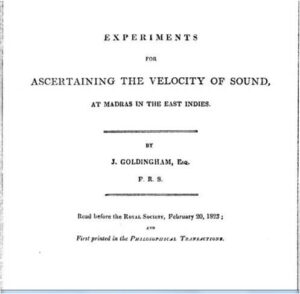As Madras Day nears, explore the influence of Madras Standard Time on India's clocks and its enduring legacy.

The Madras Standard Time was established by Michael Topping. (Supplied)
Until the late 1990s, wristwatches remained a popular timekeeping choice.
Before wristwatches became affordable and widespread, clock towers adorned crucial locations in most cities, tolling the hour.
Temple bells, marking specific pujas at designated times, have fulfilled the same purpose for centuries in India. However, their time announcements now struggle against the cacophony of urban traffic and other noises.
Ironically, time boasts an extensive history. Yet, until the 20th century, global time standardisation eluded us.
In contemporary times, the majority of nations have embraced Greenwich Mean Time, founded on the prime meridian at the Greenwich Observatory in England, as the universal hourly reference.
This underscores the political and cultural might of the British Empire.
Contrastingly, well before the British set foot on Indian soil, Indian astronomers regarded the meridian traversing Ujjain, Madhya Pradesh, as the zero longitude and prime meridian in India.
Eminent Indian astronomers like Aryabhata, Varahamihira, and Bhaskara crafted tables detailing observations, degrees, planetary paths, and of course, time, with Ujjain as their reference.
Based on their Jyotisha Siddhantas, local almanacs known as panchangas were computed for individual cities or regions.
These accounted for specific longitude and latitude values, offering local data such as sunrise, sunset, eclipse occurrences, month and year commencements, and festive dates.

Michael Topping. (Indian Institute of Astrophysics)
This time-reckoning tradition gradually transformed with the advent of Europeans and mechanical clocks.
Michael Topping, an English astronomer and the chief marine surveyor of Fort St George, established an observatory for celestial observation, especially of stars. He determined the longitude (80° E) and latitude (13° N) of Madras.
An inscription in Latin commemorates this event on a plaque at the Regional Meteorological Centre (RMC) in Nungambakkam, Chennai.
Subsequently, the British calculated the Madras Standard Time to be 5 hours and 20 minutes ahead of GMT.
For this purpose, stone pillars were erected, equipped with instruments to accurately gauge the angular positioning of celestial objects.
Some of these pillars endure today in the RMC, including one named the Michael Topping Pillar.

The Regional Meteorological Centre in Nungambakkam, Chennai, houses the Michael Topping Pillar. (Supplied)
The pillar bears inscriptions in Tamil, Telugu, Urdu, and English. The Tamil engraving denotes the English year 1792 and the Kali Yuga year 4893.
This Kali Yuga, in accordance with Indian astronomical tradition, commences with the conclusion of the Mahabharata war and Yudhishthira’s ascension to the throne.
The Kali year 4893 is represented as “சதஅளகூயங” in Tamil numerals, wherein “ச” corresponds to 4, “அ” to 8, “கூ” to 9, “ங” to 3, while “த,” “ள,” “ய” signify one thousand, one hundred, and ten, respectively.
In the following years, John Goldingham, a versatile polymath who founded the Survey School at Fort St George (later Guindy Engineering College), succeeded Topping as Madras’s astronomer.

The pillar bears inscriptions in Tamil, Telugu, Urdu, and English. (Supplied)
Goldingham conducted experiments concerning sound velocity at the observatory. It’s noteworthy that Madras was relatively small during this period, with Nungambakkam on the outskirts.
Most governmental activities centred around Fort St George, while George Town, then known as Black Town, was the primary commercial hub.
Notably, Thanjavur and Madurai eclipsed Madras in size and population.
The East India Company maintained military garrisons at the Fort and St Thomas Mount. The Fort’s garrison fired a cannon at sunrise and sunset, while the St Thomas Mount garrison fired theirs at 8 am and 8 pm.
Interestingly, this might have spawned the phrase “gun time” for punctuality, which endured until the 1980s.
Goldingham had a vantage point from the observatory tower to witness both cannon firings.
As sound lagged behind the light, he observed cannon smoke seconds before the resounding boom reached the observatory.
He meticulously documented his observations and submitted a report to England’s Royal Society.
During this period, Goldingham relied on local clocks, thus adhering to the Madras Standard Time. This, however, would change.
In 1830, George Stephenson marked the onset of the railway era in England with his steam-powered locomotive “Rocket”, inaugurating a thirty-mile cargo journey.
In July 1856, the railways made their debut in Madras. The Madras Railway Company initiated a steam-driven railway line between Vyasarpadi and Wallajah Road.

Polymath John Goldingham founded the Survey School at Fort St George. (Supplied)
Over the ensuing decades, railways proliferated across India, immensely popularising passenger train travel.
With the introduction of numerous trains, schedules, and timetables were imperative. This endeavour unveiled a crucial discrepancy — each city maintained its distinct local time, creating an unsynchronised state across the Madras Presidency and India, at large.
To rectify this, Indian Railway companies opted to harmonise their clocks via telegraph communication (since telephones hadn’t yet emerged).
As Madras was the capital, the time established by Michael Topping approximately 80 years prior became the standard for railways spanning the Madras Presidency and eventually, most of India.
This clock synchronisation mirrored concurrent efforts in Europe and the USA, where railways were also being established.
In 1884, Bombay time and Calcutta time were introduced, yet the railways continued to abide by Madras time for several more years.
Thus, Madras played the role once held by Ujjain for several centuries. The railways, engines, and carriages were imported from England.
Given the singular set of tracks connecting railway stations, clock synchronisation acted as a vital safety precaution.
In 1906, Indian Standard Time was established at 82.5° E, near Allahabad (Prayagraj), ultimately supplanting Madras Standard Time.
The Topping Pillar and its inscriptions in Chennai stand as testaments to this enthralling chronicle.
R Gopu is the co-founder of the Varahamihira Science Forum. The author also imparts education on Indian Astronomy and Mathematics.
(‘Madras 384’ is a curated compilation of articles that joyfully celebrate the captivating journey of Chennai, also known as Madras, while inspiring meaningful discussions.)

Apr 29, 2024

Apr 29, 2024

Apr 28, 2024

Apr 27, 2024

Apr 27, 2024

Apr 27, 2024